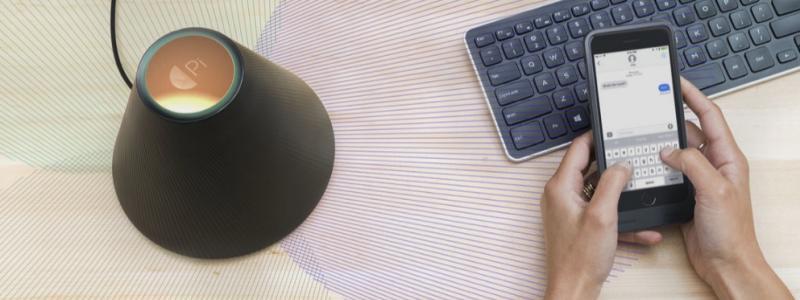Pi: Bringing Contactless Wireless Charging Into Life

The subject of wireless charging has been brought to the fore recently, especially with the unveiling of the latest iPhone models (the iPhone X, the iPhone 8, and the iPhone 8 Plus), all of which come with support for the Qi wireless charging standard. While it is true that the technology has already existed for some years now, the latest iPhones are generating renewed interest and discussion regarding wireless charging. Despite some pretty cool innovation going on, the tech itself still has plenty of room for improvement -- for instance, today’s charging pads are cool and all but users will not be able to use their smartphone while it is sitting on a pad. Sure, a wireless charging pad that does not require physical contact with the device it is charging would be a really cool idea, and more than one company have already started exploring this idea -- for instance, Energous has a product called WattUp that can purportedly charge handsets up to more than a dozen feet away. But to date, no definite contactless wireless charging product has ever hit the market yet.
But that could change with Pi. This refers to both the name of the startup company and the contactless wireless charger it has developed and released. Pi’s charger comes with a conical shape (sort of like your standard volcano), and takes resonant induction (just like the Qi standard) and combines that with a specific beam forming algorithm that manipulates magnetic fields around the device. The result is that the charging is made possible even without physical contact, as long as the device being charged is within a certain distance.
John MacDonald, the chief executive officer of Pi, says with confidence that smartphones placed within a foot from the Pi will begin charging, and even if the handset is moved, it will remain charging, as long as it is within the allowed distance. The great thing about the Pi is that it is capable of charging multiple devices simultaneously, and it can basically charge smartphones from iPhones to Galaxy models, and even tablet devices (like the new bigger iPad models), provided these devices come with the proper magnetic charging case. For those phones that already have built in wireless charging capabilities, no charging case is needed.
Of course, the more devices being charged at the same time, the slower the charging. MacDonald claims that the limit is four handsets at once. As explained by Lixin Shi, the chief technical officer of Pi, the maximum output is 20 watts, but can be boosted by simply adding parts that can generate a bigger power rating. Perhaps new generation versions of the Pi can charge even laptop devices.
To know more about Pi, better head to its official website.
Related Blog Articles
- Trading of HTC’s Shares To Halt -- Will there be a Takeover by Google Soon?
- Now That Google Has Bought HTC’s Pixel Team, What Happens Now?
- Is Face ID Safe?
- DHS to Track Social Media Accounts of Immigrants
- Google’s Family Link is Now Available for All Users
- Facebook Exploring Facial Recognition Technology
- Judge Ruling: No Need for FBI to Divulge Details of iPhone Hack
- Madefire App Now Offers Marvel Titles
- The New Pixel 2 Phones, Plus Everything Else Google Just Unveiled
- Survey: Amazon Echo Users Likely To Be On iOS Than On Android
Related Blog Posts
- Report: Drug users are using wearable devices during binges
- Spotify allows Android users to reorder playlists; Pandora lets users share tunes to Snapchat Stories
- WhatsApp combats fake news with a new forwarded label
- FCC: Today’s improving mobile networks can impact healthcare costs
- Did Apple Music already overtake Spotify in America?


 Menu
Menu